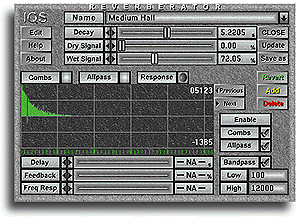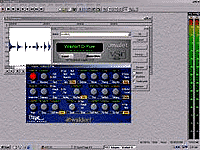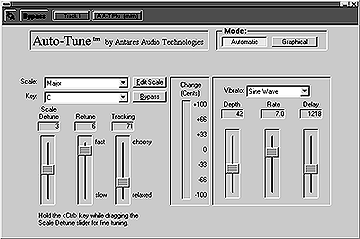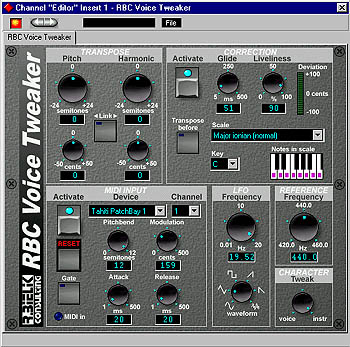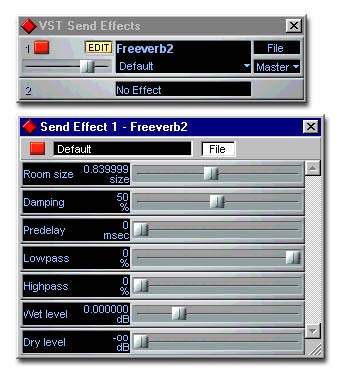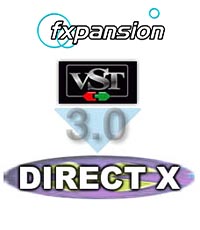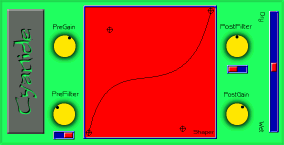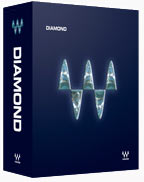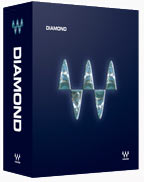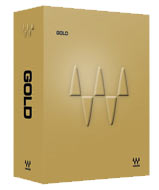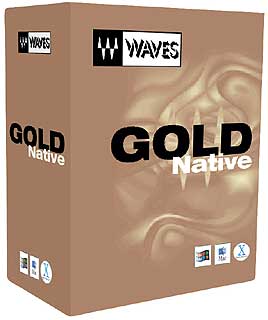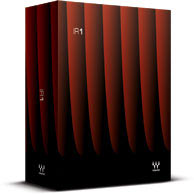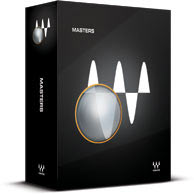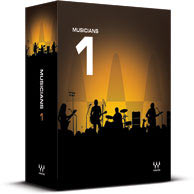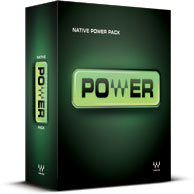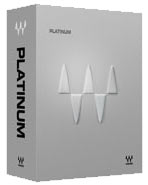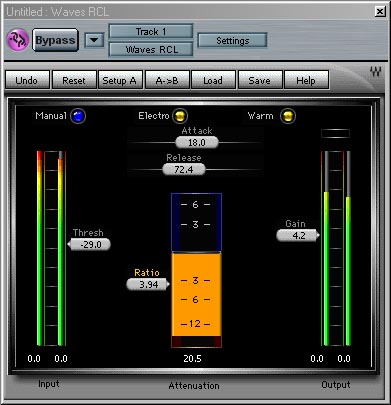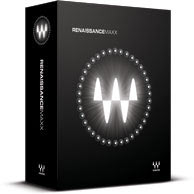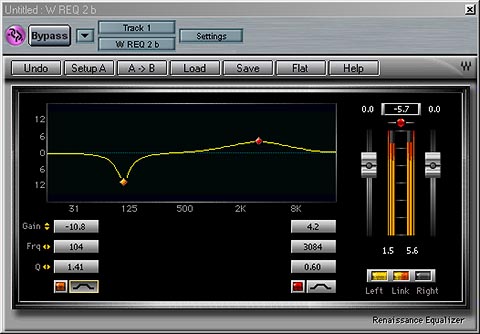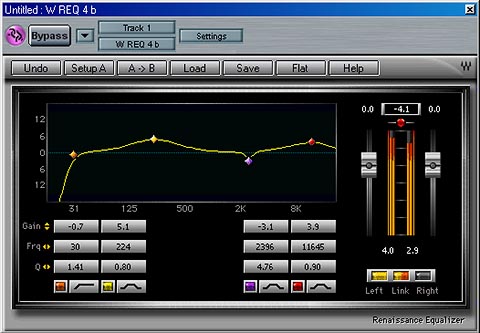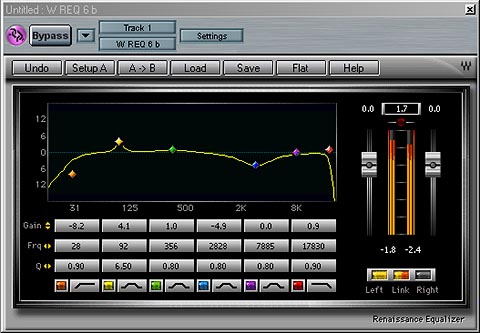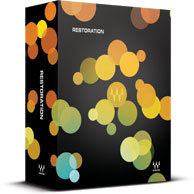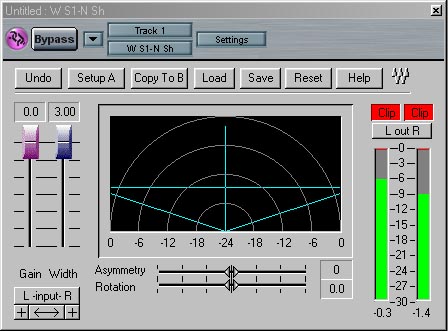Waves SSL Bundle Native
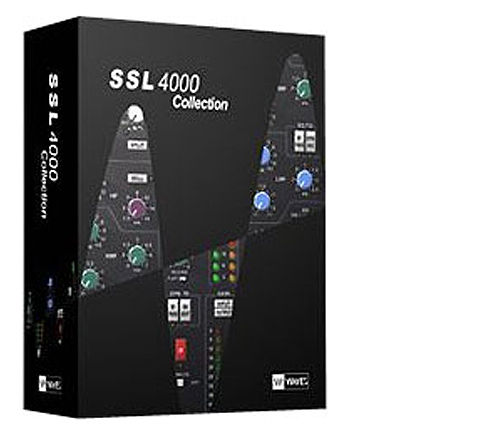
Category: Products / music software / software effects
Added: 09-Jun-07 | Author: admin
New price: 733.00 Euros - £ 496.24 GBP | S/H price: Not listed
Company Link: Waves
Waves SSL Bundle Native
Waves SSL 4000 CollectionWaves SSL 4000 Collection is a suite of 3 plugins emulating SSL 4000 series components - The Waves website & literature says of the collection:
The unique sound of Solid State Logic's 4000 Series analogue mixing consoles is sought after worldwide. Engineers of pop and rock music, broadcast transmissions and television post-production value the SSL 4000’s flexible dynamics chain as much as the trademark SSL “punchy” sound. Waves and SSL engineers have worked together for over a year to recreate the sound characteristics of the classic SSL 4000 Series E and G Series consoles. Now, those who “mix in the box” can achieve the sound they thought they’d lost when they moved to the digital world.
The SL4000 console was the first mixing desk to incorporate dynamics processing into every channel, as well as a master bus compressor in the console’s center section. The ability to 'patch' into the SL4000's master bus compressor and to control its sidechain from an internal sub-mix allowed sound engineers to discover unique, history-making applications of this console technology. Whether used to record instruments such as piano and drums or for final mixing, these innovative console sections - master bus compressor, EQ and dynamics - opened up a new world of opportunities. For years, workstation users have sought this unusual flexibility and signature sound. But conventional dynamics and EQ plug-ins couldn’t produce the unique SSL color.
The Waves SSL 4000 Collection is the result of a partnership between Waves Audio and Solid State Logic. These processors faithfully recreate the same EQ and dynamics characteristics which made legendary the SL4000 consoles. Plus, the interface accurately reflects the classic SSL console. Couple all of this with state-of-the art Waves software and you suddenly find yourself working with the same tools that have provided countless hit mixes for the world's best audio engineers....
Developed under license from Solid State Logic - The SSL 4000 Collection includes three meticulously modeled plug-ins based on the legendary SSL 4000 Series: These plug-ins sound so close to the original consoles, even experts who work with SSL boards day in and day out can’t tell the difference.
The Waves SSL 4000 Collection consists of three separate sections:
The SSL E-Channel
The SSL 4000 G-Master Bus Compressor
The SSL G-Equalizer
The 3 plugins in the collection support the following max sample rates:
SSL G-Master Buss Compressor: (TDM 96 kHz) - (Native 192 kHz)
SSL G-Equalizer: (TDM 96 kHz) - (Native 192 kHz)
SSL E-Channel: (TDM 96 kHz) - (Native 192 kHz)
SSL 4000 E-Channel
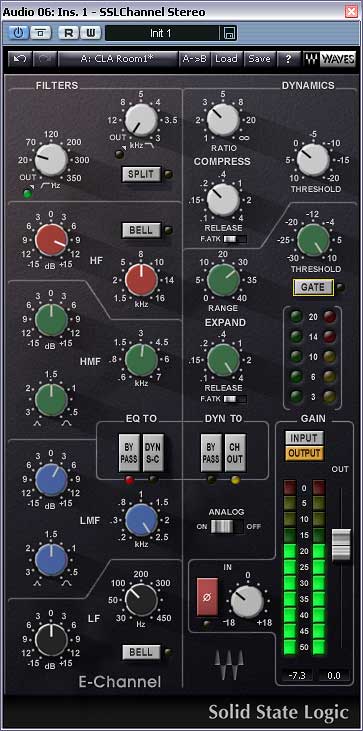
In the image above it's inserted into a stereo channel and is the stereo version of the plugin - The mono version is identical but shows only a single LED ladder next to the fader. The channel strip apparently has a latency of one sample. Using the various buttons on the strip you can arrange the sections in different ways which makes the strip incredibly versatile. Let's have a look at the bits which make it up...
Equaliser section
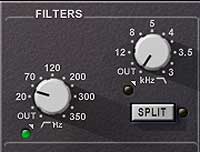
HI/LO pass filters (white knobs) - The channel visualy starts top-left with two filters, although as you'll see these do not have to be first in the chain depending on the switch configuration you choose. For noobs, you use these two controls to remove unwanted frequencies in the upper and lower frequency ranges before working on what is left to pass thru the channel.
In the help-button pop-up Waves manual it actualy describes them back to front, saying that a low-pass filter is for the range 15hz to 350hz, but actualy this is the high-pass filter which allows freq's ABOVE the selected frequency to pass through... so for noobs you'd adjust the HI-PASS filter to a frequency ABOVE which you want frequencies to be allowed thru and for the LOW-PASS you'd adjust it to a frequency BELOW which you want frequencies to be allowed thru - In actual use these two controls therefore for noobs are real no-brainers, they do the job... the more you turn them up the more low-end or high-end dissapears - LOW for one pot and HIGH for the other... here's the 2 controls spec's:
Hi pass: 18 dB/octave, 15 Hz – 350 Hz (-3 dB point) - The left of the two white filter pots - Starting real low in 'below sub-bass land', and going up to the low midrange freq of 350 Hz, this filter is simple to use to get rid of unwanted low-end frequency content.
Low pass: 12 dB/octave, 3 kHz – 20 kHz (-3 dB point) - The right of the two white filter pots - Starting at 20k and going down to the high midrange of 3.5 kHz, this filter is simple to use to get rid of unwanted high-end frequency content.
The Split Button - There's no monitor/channel switching within this s/w emulation of course. On a G series strip this is used to split the filters to the main channel when the actual EQ is switched in to monitor channel. In the WAVES SSL strip when SPLIT is selected, the low pass and high pass filters are placed BEFORE the dynamics processors in the chain, which I spose does put the filters before the eq in the same way as having them before a monitored return in hardware... anyways, more on the different routing possibilities further down the page.
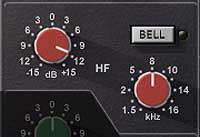
Next is the High frequency EQ section (red knobs): Range 1.5 kHz – 16 kHz - This section defaults to a hi-freq' shelving eq and can be switched with the BELL button to a bell shape - Gain range is ±18 dB for bell shape, ±16.5 dB for shelving
For noobs i spose you could say the effect of this BELL button is to simply emphasise the selected freq cut/boost in audible terms
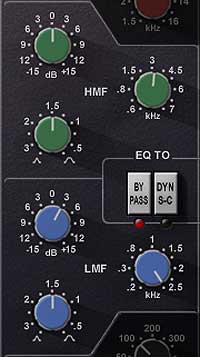
Next comes the Hi Mid Frequency (HMF) & Lo Mid Frequency (LMF) eq's - (green & blue knobs) - both are fully parametric.
HMF EQ section (green knobs): Range 600 Hz – 7 kHz
As in the LMF EQ section, Q is continuously adjustable from 0.1 to 3.5. Gain varies from ±18 dB when Q is set at 3.5 to ±15 dB when Q is set at 0.1.
LMF EQ section (blue knobs): Range 200 Hz – 2.5 kHz
Q is continuously adjustable from 0.1 to 3.5. Gain varies from ±18 dB when Q is set at 3.5 to ±15 dB when Q is set at 0.1.
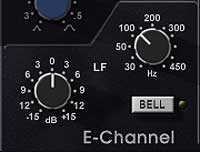
Finaly comes the Low frequency EQ section (black knobs): Range 30 Hz – 450 Hz - Again like the HF section this section also has a BELL option button - Gain range is ±18 dB for bell shape, ±16.5 dB for shelving.
For noobs i spose you could say the effect of this BELL button is to simply emphasise the selected freq cut/boost in audible terms
Dynamics section
The dynamics section consists of a soft-knee compressor/limiter (white knobs) and an expander/gate (green knobs). You get a dedicated LED ladder indicator for either to show activity for each device. (the gate led meter being the left of the two and coloured green)
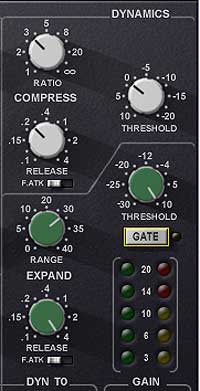
The manual says of the dynamics section:
Automatic gain make-up, calculated from the Ratio and Threshold settings, is applied by the compressor to maintain a steady output level. The default compressor attack time is program sensitive, responding to the audio material’s wavefront. The dynamics section’s threshold circuitry uses variable hysteresis, which allows the signal to decay below its opening level. (Hysteresis is the lag between making a change in input, such as increasing or decreasing power, and the response or effect of that change. Thus, the threshold’s variable hysteresis circuitry allows for program-dependent dynamic processing.)
For noobs this basicaly means the compressor responds appropriately to different types of program material played thru it and can be considered sort of 'automatic' to some extent, althought don't think that doesn't mean you can be creative with the compressor which offers everything from transaprent dynamic control to full-on serious porno humping & pumping!
Compressor (white knobs)
- The compressor’s Ratio/Slope can be set from 1 to infinity (limiter).
- The Threshold is variably adjustable from +10 dB to -20 dB.
- When the Attack time switch is set to Slow (F.ATK off,) attack time is auto-sensing and program dependent. In the Fast setting (F.ATK,) attack time will be forced to 1 ms.
- Release time is adjustable from 0.1 sec to 4 seconds.
Expander/Gate (green knobs)
- The expander’s Threshold is variable from -30 dB to +10 dB
- Range is variable from 0 – 40 dB.
- When the Attack time switch is set to Slow (F.ATK off,) attack time is auto-sensing and program dependent. In the Fast setting (F.ATK,) attack time is 1 ms.
- Release time is adjustable from 0.1 sec to 4 seconds.
- The GATE switch toggles the section from an expander (default mode) into a gate.
Master section
On the bottom right of the SSL E-Channel Strip are all the master gain controls and level indicator.
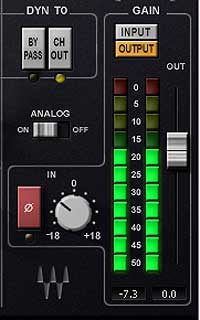
INPUT and OUTPUT switches above the meter allow you to toggle the level meter between input and output. Pressing the Input button enables you to trim the input to the channel by ± 18db using the red pot under the legend IN (next to the phase reverse button).
The Output Fader controls the output level of the processor.
Analogue on/off - Very subtle this one. The manual describes it thusly: Classic analogue processors necessarily create more noise and harmonic distortions than modern digital devices. This is, in part, what gives analogue processors their desired sound. By default, all components of the SSL 4000 Collection operate in a mode which enables emulation of the SSL analogue console. However, there may be times when you prefer to use this plug-in without these special attributes. Switching off Analogue disables analogue emulation.
Phase Reverse (Ø) - This button simply reverses the phase of the input signal.
NOTE: The plug-in is aligned so that -18 dBFS = 0
NOTE: Level Indicator Levels are expressed in dBFS, although all parameters are expressed as dBu.
(DBFS means the max available level before dig clipping)
Ok, now the 'fiddly bits' as I like to call them... I deliberately left these buttons until last cos they pertain to the various 'stacking' order abilities of the channel strip - Here's what the 4 buttons do in various combinations - and remember some of these combinations also involve the hi/lo-pass filters FLIP switch up on the top-left of the channel:
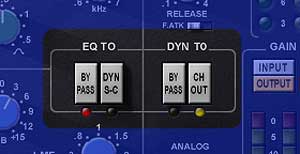
EQ TO section
BY PASS is obviously an overall EQ bypass switch - However, the manual says this of it: Note that selecting BYPASS does not result in a signal which is flat, but rather one which mimics the flat response of the SSL channel strip hardware.
DYN S-C (dynamics sidechain), routes the FILTERS (not the channel eq so the manuals says) to the dynamic's section sidechain. So you can use that to apply compression to specific frequency ranges and get effects like de-essing. However, to me it seems as if the channel eq DOES effect the compressor when this switch is thrown. Certainly increasing the LF eq section causes the comporessor to shut down more bass-end... so I ain't sure about the accuracy of the 'pop-up' help manual here, expecialy in light of the text mix up for the hi/lo shelving filter description; you'll have to try it yourself and see what you think.
DYN TO section
On the right side are a further two buttons, similarly devided off into a small sub-panel area and titled: 'DYN TO' - Use these to alter things for the dynamics section.
BY PASS is a simple dynamics section bypass switch - Employing this switch bypasses the ENTIRE dynamics section, not just the channel compressor. Again the manual here notes: selecting BYPASS does not result in a signal which is flat, but rather one which mimics the flat response of the SSL channel strip hardware
CH OUT switches The dynamics section from pre-eq (default) to post-eq'.
Ok, and here's some maps from the help guide to show you how combinations of buttons changes the arrangement of sections on the SSL 4000 E-Channel strip:
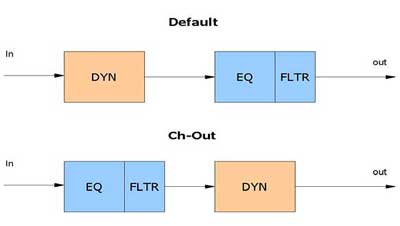
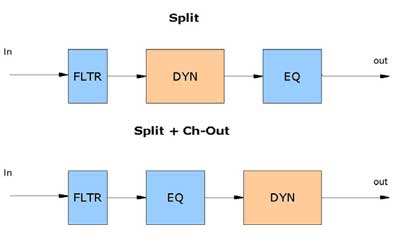
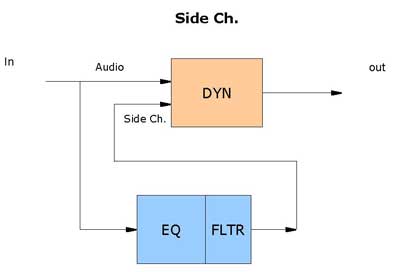

Well that's about it really for that plugin, so lets move on to the master compressor...
SSL G-Master Bus Compressor
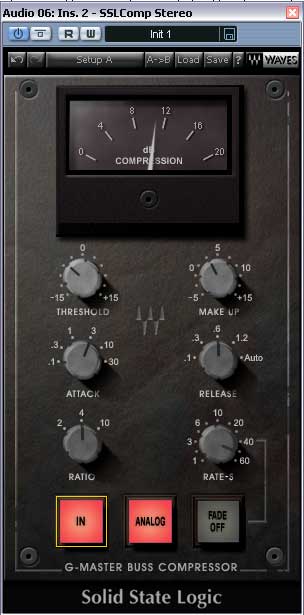
The compressor is pretty straightforward & is loadable as a mono or stereo plugin. I'll just add the Waves documentation descriptions here rather than type it all again...
The SSL G-Master Bus Compressor plug-in is modeled after the renowned SSL G Series stereo bus compressor. The compressor’s gain reduction meters are fitted to the classic SSL console range and displayed in dBu rather than in dBFS. There is an external side chain source select. Meters are calibrated to 18 dBu = 0 dBFS.
1. Threshold sets the operating level for the knee of the compressor. Threshold is continuously adjustable from -15 dB to +15 dB.
2. Make up Gain compensates for a change in signal level due to compressor activity. Make up is continuously variable from -5 dB to +15 dB.
3. Attack controls the quickness of the compressor’s response to changes. Six switchable attack rates: 0.1; 0.3; 1; 3; 10 and 30 ms.
4. The Release time of the master compressor is switchable between 0.1, 0.3, 0.6 and 1.2 seconds, or to automatic. If Auto is selected, the release time is dependent upon the duration of the program peak.
5. Ratio sets the ratio of signal level to signal gain, i.e., the compression ratio. Ratio can be switched between 2:1, 4:1 and 10:1.
6. Rate-S sets the Autofade duration. Variable from 1 to 60 seconds. When the Fade Off button is activated, the compressor will execute a fade-out over the selected duration. When the Fade Off button is toggled (will switch to fade out), the compressor executes a fade-out at the selected speed, toggling it again will switch to fade-in until unity gain is reached, at any point you can toggle it for the third time to skip all the fade status.
7. Analogue - Classic analogue processors necessarily create more noise and harmonic distortions than modern digital devices. This is, in part, what gives analogue processors their desired sound. By default, all components of the SSL 4000 Collection operate in a mode which enables emulation of the SSL console. However, there may be times when you prefer to use this plug-in without these special attributes. De-selecting Analogue will disable analogue emulation.
8. In serves as a bypass button. When In is selected, the compressor is active. When deselected, the compressor is in bypass.
Unfortunately I don't have a chance to test this with any host sequencer offering a selectable sidechain source without a fair bit of hassle at my end, but as a compressor in it's own right the G-Master Bus Compressor sounds very nice, offering all sorts of compression from full-on to subtle; again, sounds great on drum loops etc and can be used as a master bus or channel comp and even to polish off a final mix a bit. Not sure how useful in reality the automated fade up/down is when one can easily use the host workstation automation, but it's added anyways & apparently is modelled on a 4000 series S curve. - For noobs new to mixing, it can be considered somewhat a sort of 'fade out' technique to start the fade out with a very slow subtle change in level which increases until the sound is almost gone, then for the last bit it slows down again and sloly slithers out to silence, lol, it's quite effective if you didn't try it, anyways an S curve would give you that effect, but the s/w here emulates and automates all that for you.
Ah wait a minute, I just checked and yes you can automate the Bus comps autofade-out start time as the 'autofade' parameter appears in VST control parameters, excellent!
I'll close this section by saying the Bus comp can have the effect to bring out the definition freq range of things put thru it somehow rather than just squashing it.
SSL G-Equalizer
The manual describes it thusly: The SSL G-Equalizer is modeled after the rack-mounted version of SSL’s G 292 EQ. The SSL G-Equalizer functions much like the E-Series EQ in Waves’ SSL E-Channel, so it is very easy to move back and forth between these two equalizers. This four-band equalizer offers marginally greater gain change than the E-Series EQ, and each EQ offers a slightly different equalization curve, so you will need to experiment with each equalizer to discover which best suits your specific needs.
Veteran SSL users will already have their own ideas as to how to best pair the 242 EQ in the SSL E-Channel Strip with the SSL G 292-Equalizer. With a bit of experimentation you will discover how to best use each EQ, but we can offer a few generalizations with which to start:
Many engineers choose to use the E-Channel’s EQ for detail work and mixing, employing the SSL G-Equalizer as a downstream device to shape and give character to the sound. How you choose to use each
Well thats of little use mebbe to people with no hardware experience or in fact people with perhaps no particular desire to have a 'copy' of an SSL eq as they have no experience of the real thing with which to reference this. For those type of users who are simply seeking good ITB eq, perhaps all that matters to them is simply: "how good does it sound!" - Well it does sound VERY good!; a superbly versatile eq, especialy with the Multiply and Devide function buttons for the HMF & LMF bands. It's a really great little channel EQ strip!
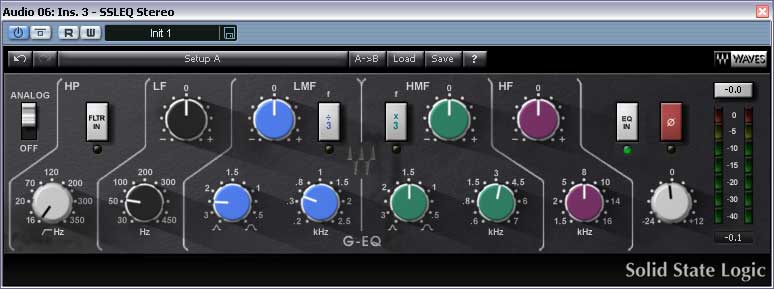
Ok, here it is, and as the blurb says it's almost identical to the E-Channel strip eq section to all intents and purposes. You can easily move between the two as a noob without any brainwork. Working from left to right, the manual text this time correctly describes the first white pot as being a HI-PASS filter:
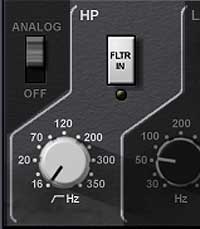
High pass filter (white knob on left) - 18 dB/octave, 16 Hz – 350 Hz. Filter in/out switch, with indicator.
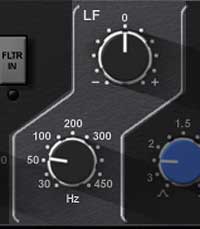
Low frequency EQ section (black knobs on left) - Shelving eq. Range 30 Hz – 450 Hz. Gain range ±17 dB.
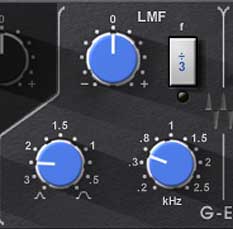
Low medium frequency EQ section (blue knobs) - Range 200 Hz – 2.5 kHz. Q is continuously adjustable from 0.1 to 3.5. Gain varies from ±20 dB when Q is set at 3.5, to ±15 dB when Q is set at 0.1. The ÷3 button divides the selected frequency by three (e.g., if you have selected a center frequency of 300 Hz, pressing the ÷3 button will result in a frequency of 100 Hz.)
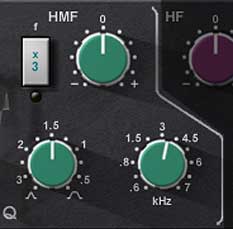
High medium frequency EQ section (green knobs) - Range 600 Hz – 7 kHz. As in the LMF EQ section, Q is continuously adjustable from 0.1 to 3.5. Gain varies from ±20 dB when Q is set at 3.5, to ±15 dB when Q is set at 0.1. The x3 button allows you to multiply the selected frequency by three.
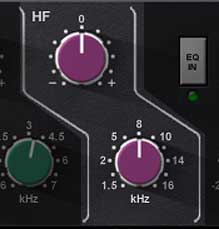
High frequency EQ section (purple knobs) - Shelving eq. Range 1.5 kHz – 16 kHz. Gain range ±17 dB.
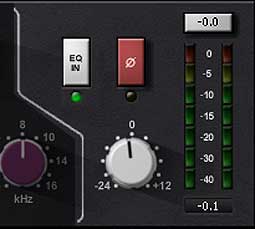
Finaly on the far right is all master channel fader, phase switch, etc.
EQ IN - The EQ IN button bypasses the EQ section but leaves the filter in (if engaged.)
Phase reverse (ø) - This button reverses the phase of the input signal.
Master Output - Master Output fader controls the overall output of the processor.
Trim button - VERY useful this little button is! - Above the meter display is a silver/white trim button. Pressing the trim button will trim the output level by the amount indicated on the button this trim will bring you to -0.1db in peak which is the full 24bit output level. A positive indication in this mode expresses how much headroom you have remaining. A negative display indicates how much you must reduce your signal to avoid digital clipping. In practice this is cool, cos you boost some midrange for example which of course raises the overall signal level/loudness, then you just click the TRIM button and it re-adjusts the output for you (you'll see the final-out pot move to fullfil this) - As I say, a useful feature because remember these are INSERT plugins so the final fader/pot doesnt latch with the host sequencer fader and thus a simple balance in/out adjuster is good news so you dont have to continualy re-adjust the host channel fader when applying eq changes.
Analogue on/off - Classic analogue processors necessarily create more noise and harmonic distortions than modern digital devices. This is, in part, what gives analogue processors their desired sound. By default, all components of the SSL 4000 Collection operate in a mode which enables emulation of the SSL console. However, there may be times when you prefer to use this plug-in without these special attributes. Switching off Analogue disables analogue emulation.
In practice this EQ can be thought of as slightly more radical i spose... as they say in their literature:
"In general, the SSL G-Equalizer allows you to create a more extreme EQ than with the E-Channel Strip"
And thats how you perceive it; you can push harder midranges and it's got a nice shimmer to it. I had fun also adding this in series with a Cubase reverb plugin to mould the reverb sound with some 'room', 'overheads' or 'snare' presets from the EQ & then further tweaking to taste. You can very quickly get even a crappy reverb like Cubase's reverb-A to sound like inside a club on some banging drumloops. I think the SoS reviewer of Duende (when trying to find a criticism with Duende) said that he wished the lo-mid went down further than 200 Hz; well with this EQ plugin and it's LMF band 'devide-by-3' switch you can get down with the LMF parametric nice and low, just below 100Hz, so there's adequate ability to tight-boost a low kick-drum freq' or just take a slight dip out of a bass guitar etc without resorting to shelving off bass at all. Nice eq anyway; again like the E-Channel EQ it's got a quite vibrant defined midrange which is what I like the most about both these SSL s/w EQ's in general, and it too also does not faigue you when applying quite radical boosts in upper or upper/midrange frequencies.
Waves SSL 4000 Collection - Summing (groan) up!
Well... hmmm.. this collection is NOT cheap!... edu' discounts might be available, I haven't checked that. For noobs who do have some outlay cash to spend they will also probably be considering dsp-card based solutions such as from UAD, and there's Liquidmix and things of that ilk all the way up to a hardware based Duende rack solution offered by SSL themselves or Pro-Tools hardware hosting of course at a substantialy higher pricetag (for which this series of plugins is available) - But... is having a close or even VERY accurate model of an SSL channel eq and dynamics etc worth it to an average user seeking a great ITB sound?
Well I suppose that question is partly rhetorical, all I can say is this collection offers very cool sounding usable & creative host-based eq and dynamics, but at a price. Noobs with some cash might be wise to check this stuff out because I've tried this on several low-end machines and it doesnt seem at all CPU hungry!... Even if you have no particular idea what an SSL sound is or aren't bothered if this solution gets you there, what this package does give you is superbly useable eq and compression with a character & smooth sound which is so noticeable.... You can see why the classic old SSL's became the mixer of choice for mixing hits beyond global inter-studio compatibility... it's got a great sound alright!
If you just for example place the stereo E-Channel on a house drum loop and subtley mess with the parameters, you'll possibly be transfixed with the way it can boost frequencies quite radicaly while still sounding musical - Sometimes pushing a tight mid band for example might result in something exciting in the way it emphasises claps and the 'crack' of a house downbeat, but at the same time it can have a slightly abrasive overtone which entualy becomes wearing. The SSL software doesnt have that effect, and quite radical eq settings seem somehow 'musical' - Sure it's a well worn critics cliche.. "The eq is so musical!"... someone really needs to think of a new one, lol, but it's true, and equaly, playing with the bass end adds a warmth or oomph or whatever and no loss of focus; it doesnt swamp the bottom end at all even with quite significant boost. Add to that various stacking options and ways to control the dynamics section and you might be hooked on this software!
One upside for noobs and experienced alike, is that you get a very decent selection of presets which are great starter points where such a comprehensive eq might prove intimidating with so many possible variations for the less experienced user or where you want a typical starting point for a tweak to save time. There is presets for most live recorded typical instrument types such as snare, kik, toms, overheads, vocals, backing vocals, guitars, acoustic guitar, bass etc etc, thats really good and something that's sadly missing or at least severly under-represented from Liquidmix for example which currently offers a very paltry set of presets.
Any downsides besides the (to some) expensive price might possibley be problems with controller automation - Being a DX plugin the SSL Collection needs to use the included WAVESHELL .dll mapping function to be controllable from generic hardware controllers whereas all VST plugin FX are just ready to go, I personaly couldn't get it to work in the limited time I had to play with the plugs, however, I'm sure that's just me and besides, the mouse method works well enuff & with the already mentioned supplied presets as starting points it's very quick to add an SSL strip, select a sound and then tweak it.
Other downsides - and this is THE big downside!!! - WAVES are getting enormous flak and boycotting from users globaly right now because of their appalling attitude to authorisation and updates... It's got to the point where in some cases people are discussing on user groups the idea to bring a class action legal against the Waves company, and some are even suggesting you simply don't bother installing the purchased version but instead keep the box on the shelf and install a cr*ck!!... Really, it's that bad, with furious users all over the place getting really p*ssed with WAVES... Take this example from Gearslutz:
Ya know when I read this thread when it first came out, I really felt bad for the original poster, but...
Little did I know that a week or 2 later, I'd be re-installing the OS and all my software due to a hard drive issue.
All I can say is "Waves Sucks donkey dongles!".
I have:
1) Waves Native Power Pack
2) Waves Rennaisance Pack #1
3) Waves Rennaisance Pack #2
4) Waves IR-1 v.2
Out of those 4 "bundles", the IR-1 is the only one that is less than a year old, so it is the only one that I can re-install for "free", the others only through a pay-for WUP.
BTW...in order to upgrade the 3 packages that are older than a year old would cost me about US$1,000. That's ONE-THOUSAND FREAKING DOLLARS!!! Are you kidding me??? What a joke! What an insult!
Just like the original poster, I am not trying to upgrade to a newer version, I am only trying to re-install software that I already own the licences for. This is not even a new computer, just a new hard drive for crying out loud!
Never, ever again will I give Waves a penny of my hard-earned cash. This is how they treat loyal customers?
And here I was considering on of those ASP44s to run several instances of the IR-1...forget about it!
Sheesh! Even Steinberg has better support than this.
Beyond belief.
So you don't know what you might face in the future if Waves decide to change 'policy' - What you should do I can't really say because some would counter argue that you buy the s/w and it works, but there's many reported issues of users having re-authorisation nightmares... if things go on like this there's a possible chance the company could go bust, as dedicated high-paying users desert & boycott the company in droves, and then there will be no updates or support anyway regardless of how atrocious their current policies are. Anyways, you'd be well advised to spend a good amount of time checking out Waves user issues on forums and user groups with some web searches.
There is also another thing to consider if contemplating this collection - What's your other choices for an emulated bespoke channel eq and dynamics with top-end quality if you decide NOT to go with this SSL collection? - Well there's DUENDE from SSL themslves, which emulates an SSL digital console strip and is hardware hosted, but there's the latency issue caused by the firewire connection - You cannot use DUENDE to record THRU, only to mix, because the latency caused by the firewire path to and from the host hardware unit is simply to large to allow it to be inserted as an effect in realtime.
Then there's Liquidmix which is current a 'buzz product' of this type - I've had Focusrites LIQUIDMIX on trial for some few months here, and again it suffers from this same issue of firewire latency making it un-usable in realtime as an insert, and while some may say, "well that doesn't matter cos I only want it to mix", there's many for whom this would be an issue. There's also of course the highly rated UAD card solutions, but while latency isn't such an issue, the UAD card alone won't give you very many instances of their excellent and highly rated modelled classic units.
Finally when choosing between something like this and a firwewire hosted solution or card solution, there is the issue of reliability... This collection of SSL plugins are native plugins of course. I tried them on a variety of machines including a few lower powered machines such as an AMD Athlon XP 2000 and even a really cheap-assed SEMPRON, and the WAVES SSL plugins ran on everything I tried and very efficiently too!... You could easily get 24 full channel strips running on an older AMD or pentium machine and still have headroom left over for other things!
So when going head to head with Liquidmix for example?... well Liquidmix wont run at all on a PC version of Logic 5, or at least I couldn't get it to without endless crashing and siezing and error messages when you get beyond a few instances and even sometimes just adding ONE Liquidmix to a single mono audio track causes the whole thing to bomb! - Still looking at this issue but I can't find any solution so far & of course Focusrite's answer is that as Logic on PC is discontinued it's not an issue although I'd argue it is because of the hundreds of thousands of PC Logic users who refused to change to a Mac & who might like Liquidmix for their home studio... Oh well, whatever, it's a damned shame tho, and possibly further driver updates could sort this out but I doubt it somehow.
Liquidmix works way way better in Cubase without any crashing at all, but there is still the much reported issue I found of different performance after loading a setup/song with Liquidmix plugs added, and then saving and reloading that same setup/song again.... Sometimes Cubase will glitch like buggery for quite a while (5 minutes or so) upon re-opening a song with added Liquidmix plugs, or sometimes it reopens and glitches and never really settles down fully unless you remove and re-add some plugins, although this appears to be a deied Steinberg issue which is much noted on discussion groups...
Then there is the issue previously noted of Liquidmix being usable for mixing only (remembering it's latency is too high for realtime use) - Liquidmix offers more variety true, but I'm afraid after months of Liquidmix trialing I would say I'd rather own the SSL collection because it CAN function offering realtime inserted channel strips or bus comps and it is 100% rock solid on everything I tested it on!. Although you only get a model of SSL channels it's so damned good tbh I dunno if I care whether I have a emulation of a Neve EQ or Fairchild comp good as the Liquidmix emulations are (and they are damned good!)... It's horses for courses really, thats all I can say. Perhaps if I used Cubase rather than PC Logic, and I ran a studio which primarily recorded bands and then mixed them traditionaly I would get Liquidmix AND the SSL collection as part of my arsenal, but given the option to only choose one of the two I'd plump for the SSL collection & supplement that with other plugins for variety.
I think it'd be a good summing up to say that this package will possibly delight the experienced and the better-off newcomer alike. The dynamics section on the E-Channel is very flexible offering a huge range of compressor 'sounds' way beyond the fundamentals of simple dynamic control. It'll pump like a goodun and make gorgeous crunchy, sucking, cracking clap and snare sounds or hihats which really pulsate!... However, if you want unintrusive smooth and subtle dynamic control it doesnt require much fiddling. Add to that the various switchable config's and you get a VERY versatile, great sounding & flexible host-CPU driven eq & channel strip (as well as the superb Bus eq which really is excellent!)
The possibilities for sound sculpting as well as corrective jobs is enormously rich in scope & the fact you can do this in realtime as you compose and not only at mixtime makes it way superior to Liquidmix for dance music composition where the eq and dynamics contribute so much to the actual composition process - You cant really 'mix' a dance tune after the fact imo because dynamics & EQ are such a huge part of creating the basic groove to start with as you play and create. I think there's a way with the SSL that the dynamics and eq are entwined somehow; there's a unification of the dynamic and eq somehow which makes it as it is... a really excellent sound!
At this price you might well say "It bloody well should be good!"... and i agree even tho at just under £500 quid or so it's actualy not that expensive for the sound and versatility you get; but so often well-anticipated s/w fails to tickle the right parts and seems like so much hyperbole... in the case of the Waves SSL 4000 Collection that's something you wont have to worry about; it is alot of money, but I had fun!... I actualy sat and for hours just tweaked eq and dynamics on the same few sound loops, and the resulting audible experience was very pleasing, and that has to be a good sign!
Product Manuals or Files
Product Resources
More choices in this product category from other manufacturers:
Category: Products / music software / software effects
User Comments
THERE ARE NO COMMENTS POSTED FOR THIS PRODUCTBe first to add a comment - what's the product like in real life?...
'Waves SSL Bundle Native'
Looking for the manual? - Check this page above under the heading: 'Product manual or files' - We might have it!
Note: To cut down on spammers, cookies must be enabled to post comments to this page.
Looking for the manual? - Check this page above under the heading: 'Product manual or files' - We might have it!
[back to top]
Total stars: 8 | Total votes: 2
21 other
products from
Waves
Thomann deals
